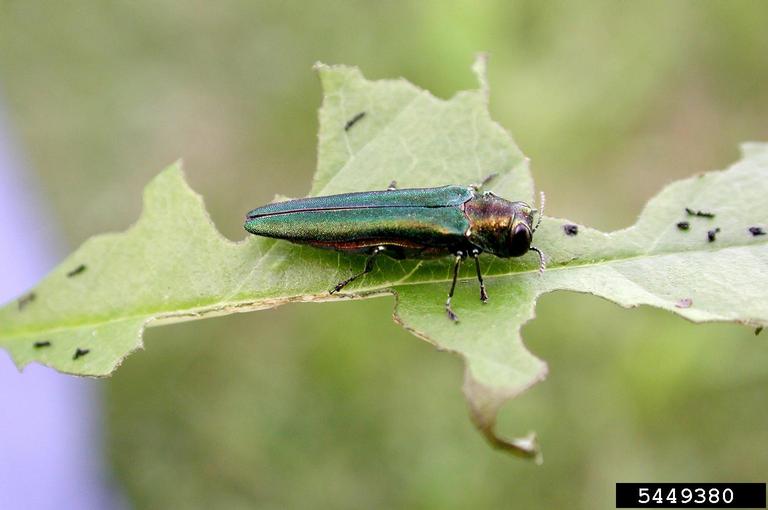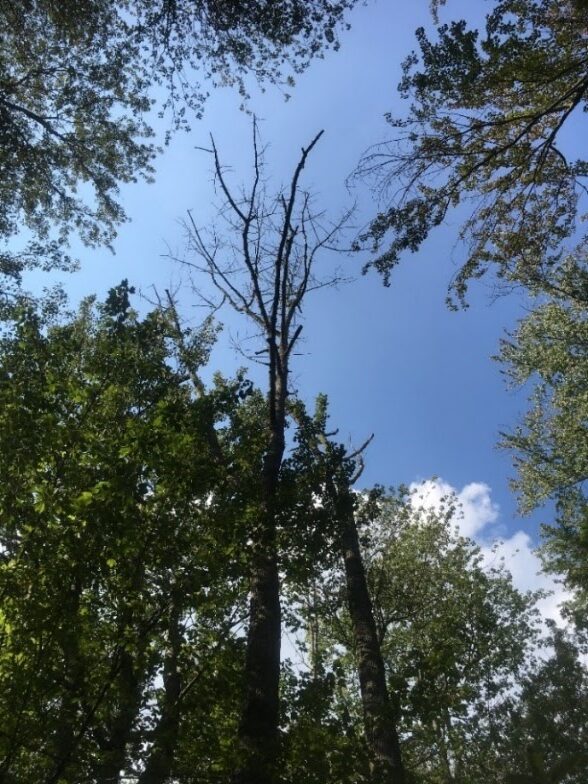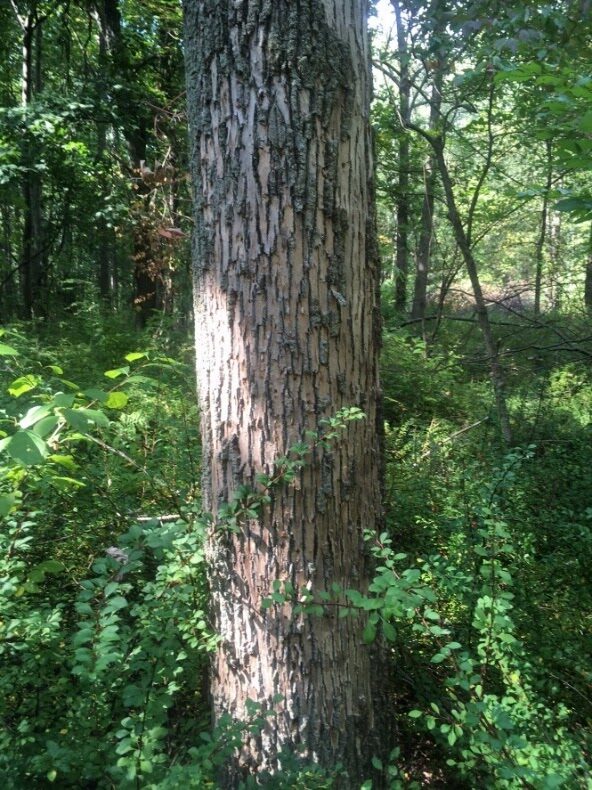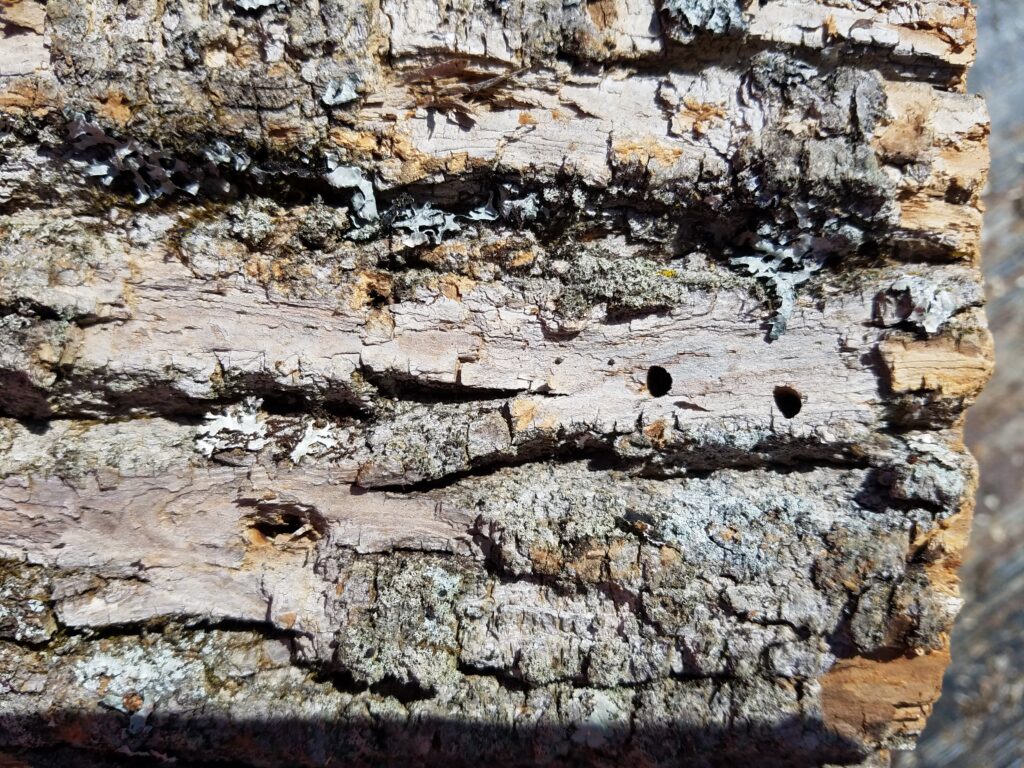Five years ago, almost 10% of Highstead’s mesic forest canopy was comprised of ash trees. Today, the emerald ash borer (Agrilus planipennis), a beetle native to Asia, has eliminated almost every one of these trees.

How did they do that? Emerald ash borers (EAB) lay eggs in ash trees’ braided bark, and once larvae hatch, they feed on the inner bark. This obstructs the ash tree’s ability to transport vital water and nutrients throughout its system. Most ash trees will die 3-5 years after infestation.


The loss of the ash trees reduces total forest growth and living biomass in the forest. It also changes the structure of the forest, which in turn is changing the habitat for animals. Standing dead trees become an important food source for species like woodpeckers that also eat EAB larvae. However, where the ash canopy has died, invasive vegetation like multi-flora rose and hardwood saplings flourish due to increased sunlight reaching across the forest floor, providing cover for the vulnerable New England cottontail and other shrub-specialist wildlife species.

According to the Connecticut Department of Energy and Environmental Protection (CT DEEP), you can help in the effort to stop the spread of emerald ash borer by:
- Knowing what an ash tree looks like and monitoring the ash trees you see on a regular basis;
- Swiftly reporting any ash trees that are declining and may pose a danger to people or structures; and
- Being careful when moving any firewood or young trees.